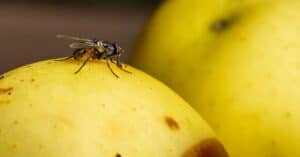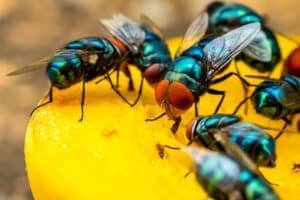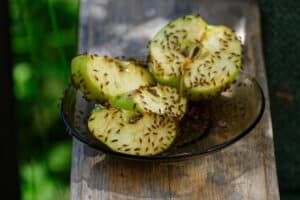Flies buzz around and annoy you during the day, and occasionally you’ll have one dive-bombing you as you’re getting ready for bed. But after the lights are out, generally they tend to settle down. They’re tired out from a day of combat and need to rest so they can be ready to come at you with fresh energy in the morning. But what happens to them at night? In this article, discover the most common places flies go at night, as well as ways you can prevent and combat a fly infestation.
Key Facts
- With species numbering 110,000, flies are incredibly numerous.
- Flies land on food and waste to eat and to lay their eggs there.
- Flies only live a short time, ranging from days to weeks. Their main goal during that time is to feed themselves and reproduce the next generation.
- During the day they rest when they feel tired, but they also sleep a few hours every night.
- You can prevent a fly infestation by using screens, covering food, sealing garbage, setting out traps, using pesticides, and increasing the number of natural predators that feed on them.

The multi-lensed eyes of a blowfly are impressive but cannot see color or things that are far away. They are more for sensing movement up close.
©Cherdchai Chaivimol/Shutterstock.com
4 Fly Facts
1. They Spread Nasty Diseases
Flies are not just mild annoyances, but serious dangers to people and animals because of the deadly diseases they can spread. Flies spread typhoid fever, cholera, dysentery, E. coli infections, anthrax, polio, or tuberculosis. If you live in a place where you have access to vaccinations for those diseases, count yourself fortunate. In less-developed areas of the world with large numbers of unvaccinated people, these fly-borne diseases sicken millions of people and cause hundreds of thousands of deaths every year.
2. They Can Be Helpful
Like everything else in the natural environment, flies fill an important niche. They pollinate some plants and break down decaying plants and animal carcasses. Maggots (the larval stage of flies) have a good medical use in removing diseased flesh from a wound to help it heal better. Fruit flies have been incredibly useful in genetic research because they have very short lifespans. A researcher can introduce a modification and see how it gets passed on to the next generations of fruit flies within a matter of days or weeks. This is super helpful in the study of genetics. Flies are a significant part of the diet of birds, reptiles, amphibians, spiders, and even predatory plant species such as a Venus flytrap.
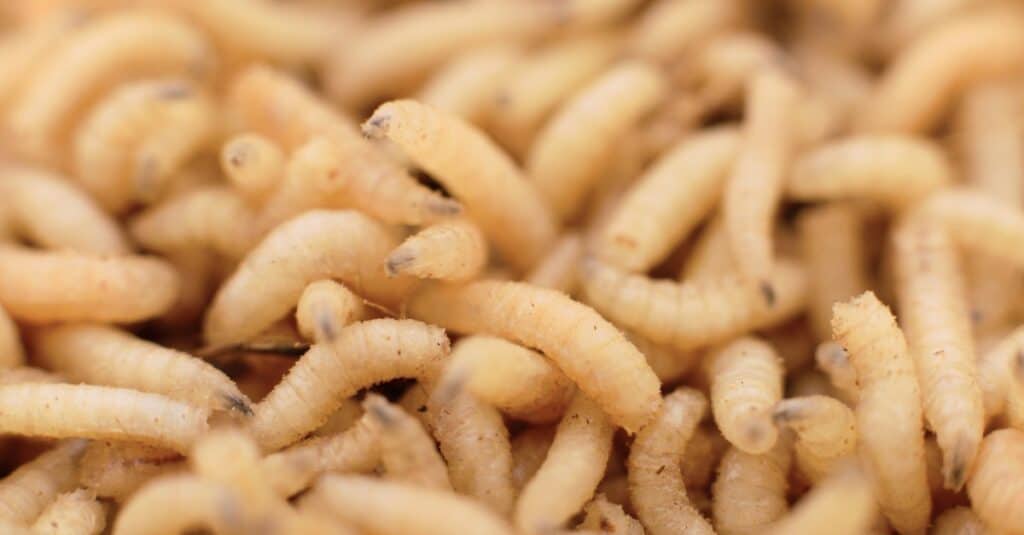
In maggot therapy, a doctor will introduce maggots to a festering wound to allow them to eat away every fragment of decaying flesh.
©iStock.com/Tsekhmister
3. Flies Don’t Live Long
Depending on the type of fly and the conditions they are living under, flies might have a lifespan of only hours or a whole year. Fruit flies in excellent conditions can survive as long as 40-50 days. Mayflies live just a few hours or days. This gives them time to reproduce, but not much else. Houseflies typically survive 15-30 days but in the best conditions can survive 60 days.
4. It’s Easier to Prevent Flies Than to Kill Them
Preventing flies doesn’t actually take all that much effort. It’s a matter of keeping well-repaired screens on doors and windows, cleaning up spills, keeping garbage closed up in sealed bags, keeping food covered and put away, and removing any sources of standing water. Keeping a clean house and yard goes a long way to making your living spaces less attractive to flies, and more attractive to people.

Keeping garbage sealed up is one way to prevent a fly infestation.
©iStock.com/PinyoJPR
Frequently Encountered Flies
Fruit flies, houseflies, and horseflies are three species you will most often run in to. We’ll describe these to convey a general idea of the ways flies behave.
Fruit Flies
Tiny little fruit flies live indoors all throughout the year. In areas with harsh winters, fruit flies and their eggs are still able to stowaway with your groceries into your kitchen. Fruit flies like strong smells from things like fermented beverages, overripe fruit, unemptied garbage, and sour potting soil from houseplants that have been given too much water. A single fruit fly can lay 500 eggs which will hatch the next day.
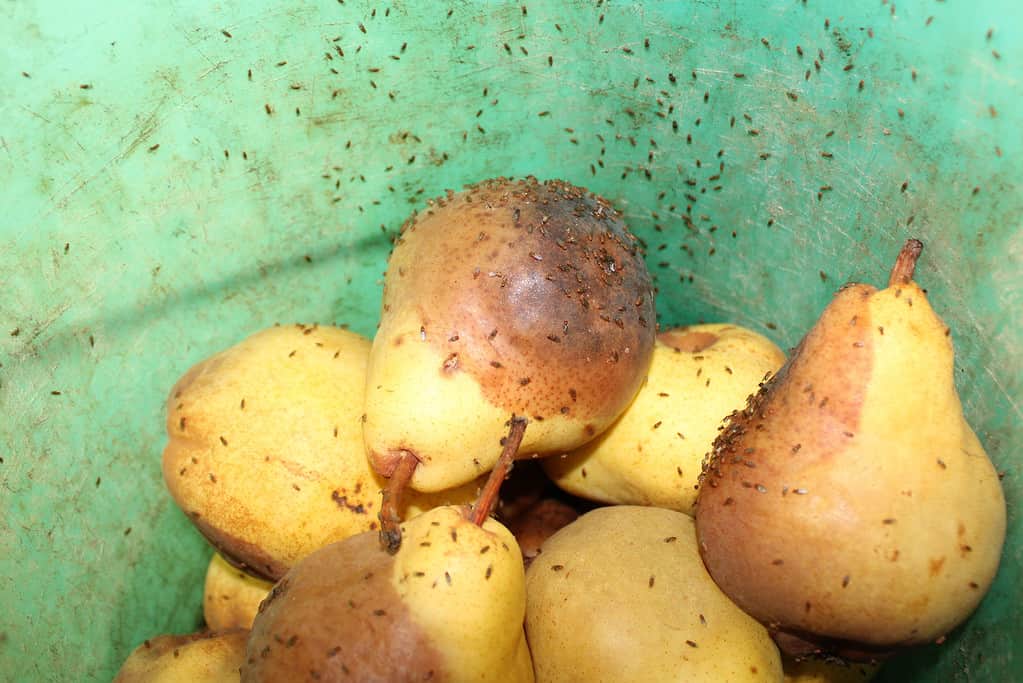
Fruit flies are attracted to strong smells, such as spoiling fruit.
©iStock.com/Martina Unbehauen
House Flies
House flies live all over the world. They are usually gray with black stripes running lengthwise down their bodies. Females mate one time and produce 350-900 eggs. The eggs hatch into maggots that eat refuse like spoiled meat or rotting plants. Full-grown houseflies can live 15-50 days but have reached a maximum lifespan of up to 60 days when conditions were right.

Houseflies have a complex alien-looking structure when viewed up close.
©iStock.com/Pattra Jayasvasti
Horse Flies
Horse flies are the bane of the existence of horses, cows, and sheep. The females are parasitic flies that feast on the blood of live victims, while the males eat pollen and plant nectar. Horse flies can be found in rural areas where they have access to standing water and numerous animals. They are able to traverse more than 30 miles in search of breeding grounds and prey. Horse flies are especially drawn to dark objects that are in motion and are extra active on hot days with little air circulation.
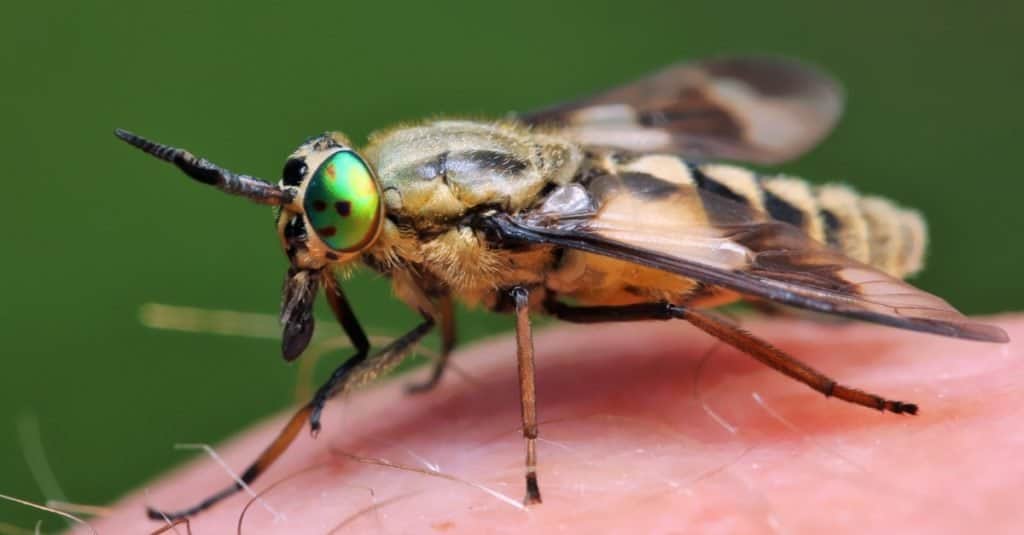
Female horseflies have a painful bite. They drink blood from their victims.
©Achkin/Shutterstock.com
When Do Flies Sleep?
Flies move around the most in the mornings in spring and fall when the temperatures are warm. They take a lot of rests during the day, landing on things and moving on when something disturbs them. They’re able to cling to many surfaces and even walk on ceilings upside down because their feet excrete a kind of sticky glue. In choosing a resting spot, houseflies especially like things that have an edge, like doorways, walls, furniture, wires, strings, leaf stems, etc.
During the day they take little naps of five to 15 minutes to recharge, but at night they will sleep for several hours. For these longer night rests, they will often seek shelter under leaves and branches of houseplants or outdoor trees and shrubs, or on tree trunks, garbage cans, fences, and stems of taller plants. Flies look for a place to sleep that is at least 5-15 feet off the ground to protect them from predators that don’t climb high.
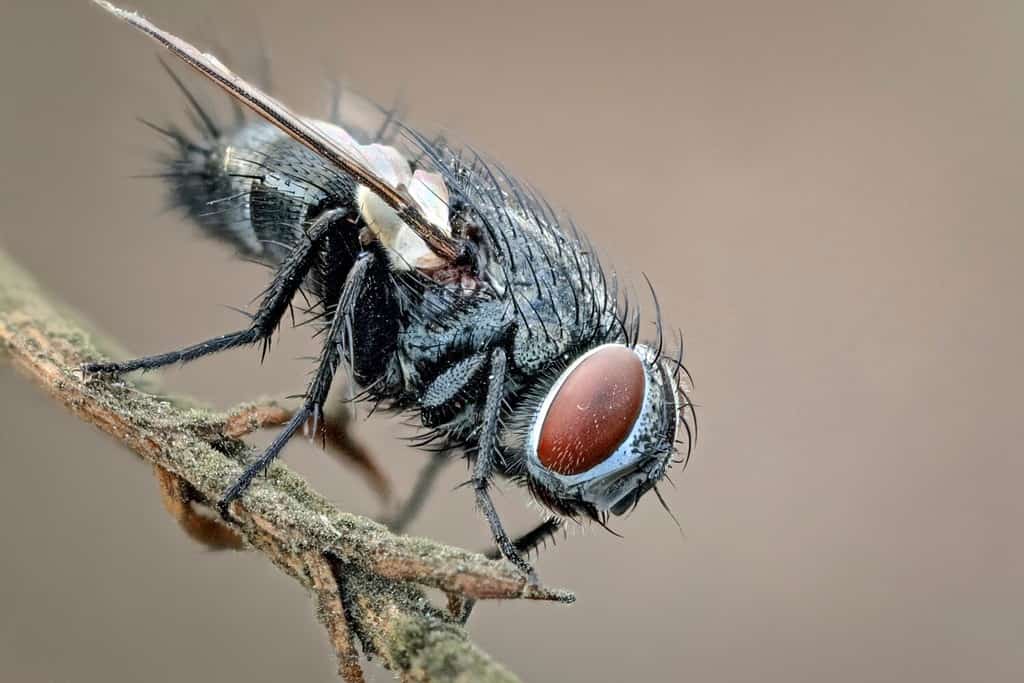
Houseflies take rests of five to 15 minutes at a time during the day but sleep for several hours every night.
©Videocorpus/Shutterstock.com
Preventing a Fly Infestation
Preventing a fly infestation involves taking some basic maintenance steps to keep your house and yard clean and inhospitable to flies. Here are some tips:
- Secure garbage in plastic bags and empty garbage regularly into bins with tight-fitting lids.
- Remove standing water from basements or outdoors.
- If you keep your windows and doors open, make sure they have good-fitting and well-repaired screens.
- Clean up any pet accidents in the house or yard quickly and empty litter boxes frequently.
- Wipe up spills immediately and don’t leave food out uncovered on your counters or outdoor tables.
- Now and then flush your drains out with boiling water to kill bacteria.
- Use cleaners or scent diffusers with smells that flies don’t like: basil, bay leaf, cedar, cinnamon, citrus, citronella, cloves, cucumber slices or peels, eucalyptus, lavender, lemongrass, marigolds, mint, peppermint, pine, rosemary, or vanilla.
- Flies don’t like moving air, so keep fans and air conditioning going to encourage them to move on.
Some Ways to Kill Flies
If you already have a fly problem, here are some possible ways to deal with it:
- Use flypaper or sticky strips.
- Use an electric fly killer that attracts flies and zaps them with an electric charge to kill them.
- Create your own DIY trap: put drops of dish soap into a small amount of vinegar in a glass. Cover the glass in plastic wrap with a small hole poked in the top. Once flies get in and try to drink the vinegar, the soap will cause them to sink and drown.
- Try eco-friendly insecticidal soaps, oils, or microbial insecticides.
- Spray an insecticide with pyrethrin or azadirachtin.
- How about a Venus flytrap? If you have a green thumb, you might enjoy raising some carnivorous plants to help reduce your fly population.
- Anything you can do to increase the population of birds, reptiles, amphibians, and spiders in your yard would help cut down on your fly population.
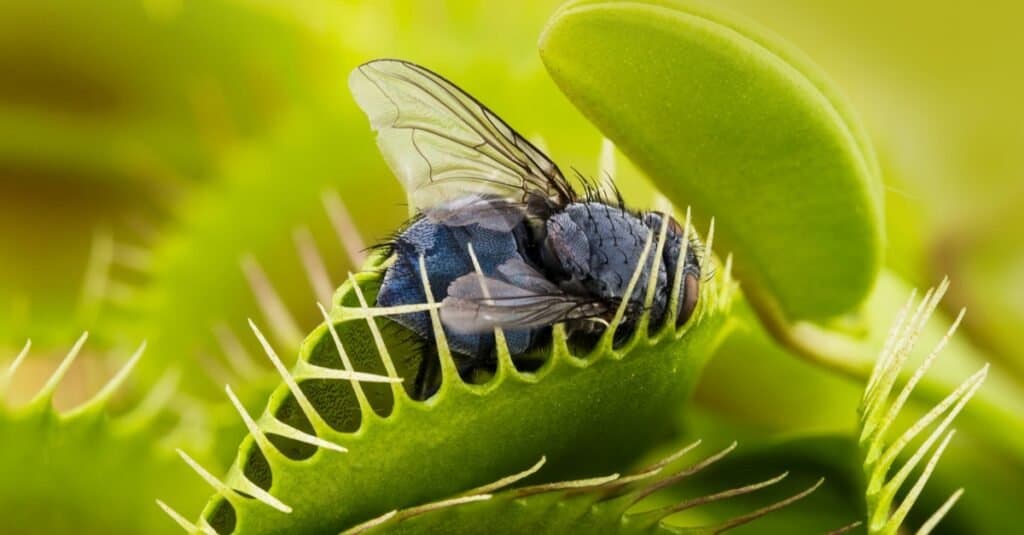
Venus flytraps and other carnivorous plants are a natural way to reduce fly populations.
©Kuttelvaserova Stuchelova/Shutterstock.com
Go Away Flies!
As we’ve seen, flies do have some important roles in the natural balance and can even be useful to medical science. That doesn’t mean you have to create a whole ecosystem of them in your house though! Taking the time to keep your house and yard clean and smelling good, and stocked with natural predators of flies, can make your living space much less hospitable to them, and much more enjoyable to you.
The photo featured at the top of this post is © iStock.com/zhikun sun
Thank you for reading! Have some feedback for us? Contact the AZ Animals editorial team.



